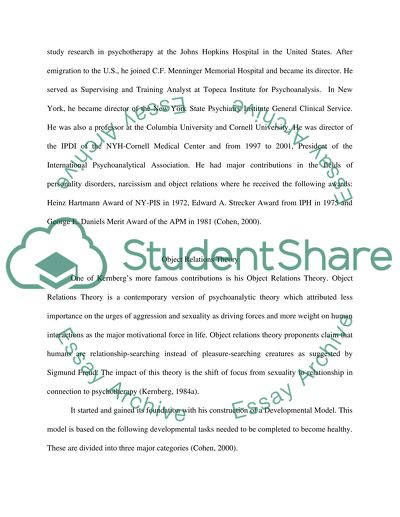Cite this document
(Otto F. Kernberg and His Theory Term Paper Example | Topics and Well Written Essays - 2771 words, n.d.)
Otto F. Kernberg and His Theory Term Paper Example | Topics and Well Written Essays - 2771 words. Retrieved from https://studentshare.org/humanitarian/1532332-kernbergs-theory-of-object-relations
Otto F. Kernberg and His Theory Term Paper Example | Topics and Well Written Essays - 2771 words. Retrieved from https://studentshare.org/humanitarian/1532332-kernbergs-theory-of-object-relations
(Otto F. Kernberg and His Theory Term Paper Example | Topics and Well Written Essays - 2771 Words)
Otto F. Kernberg and His Theory Term Paper Example | Topics and Well Written Essays - 2771 Words. https://studentshare.org/humanitarian/1532332-kernbergs-theory-of-object-relations.
Otto F. Kernberg and His Theory Term Paper Example | Topics and Well Written Essays - 2771 Words. https://studentshare.org/humanitarian/1532332-kernbergs-theory-of-object-relations.
“Otto F. Kernberg and His Theory Term Paper Example | Topics and Well Written Essays - 2771 Words”, n.d. https://studentshare.org/humanitarian/1532332-kernbergs-theory-of-object-relations.


